On This Page
The Best Cooling Comforters
Our Top Picks
-
Best Overall
Luxome ClimaSense Comforter -
Best Value
Rest Duvet Evercool Comforter -
Best Luxury
Cozy Earth Bamboo Comforter -
Best Temperature Regulating
Slumber Cloud UltraCool Comforter -
Best All-Season
Sijo TempTune Comforter
Best Overall
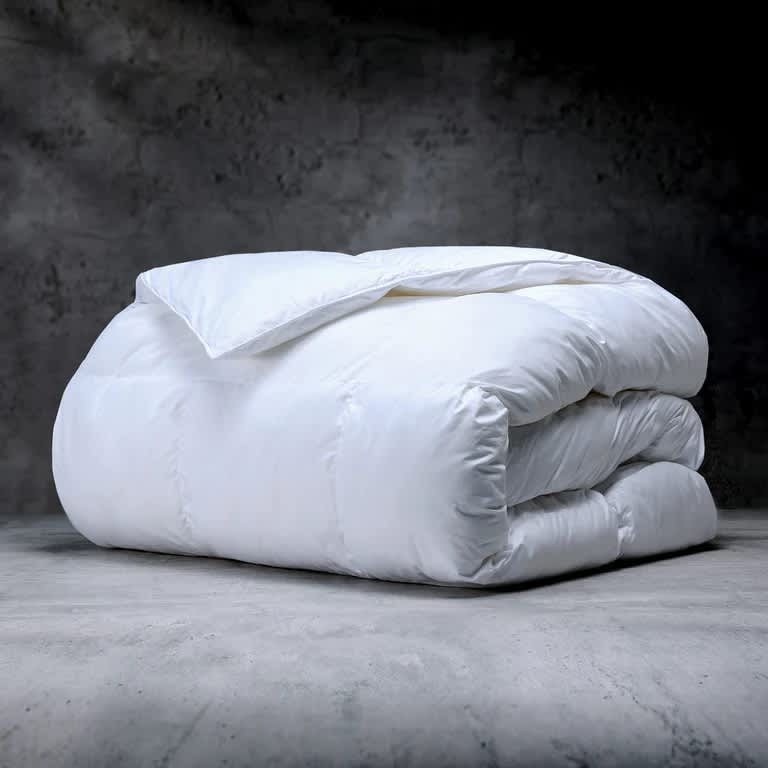
The Luxome ClimaSense Comforter is a plush and versatile model that impressed our testers with its exceptional temperature regulation.
Pros & Cons
Pros
- Proprietary polyester fill is engineered for temperature control
- Blended cotton and polyester cover is smooth and breathable
- Oversize design provides generous coverage for co-sleepers
Cons
- Not machine-washable
- Polyester fill is less durable than down
Full Details
How Does It Feel?
Why We Like It
Best Value
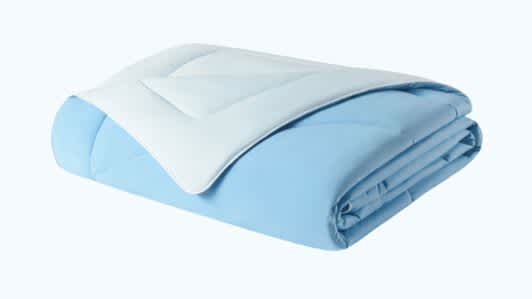
Rest Duvet’s Evercool Comforter is engineered to resist heat retention in any climate and wick moisture away from your body.
Pros & Cons
Pros
- Proprietary Evercool fabric is breathable, ultra-stretchy, and long-lasting
- Above-average moisture control for those prone to night sweats
- Available in three sizes and five color palettes
Cons
- May not provide enough insulation on chilly nights
- Commercial washing machines may be needed for larger sizes
Full Details
How Does It Feel?
Why We Like It
Best Luxury
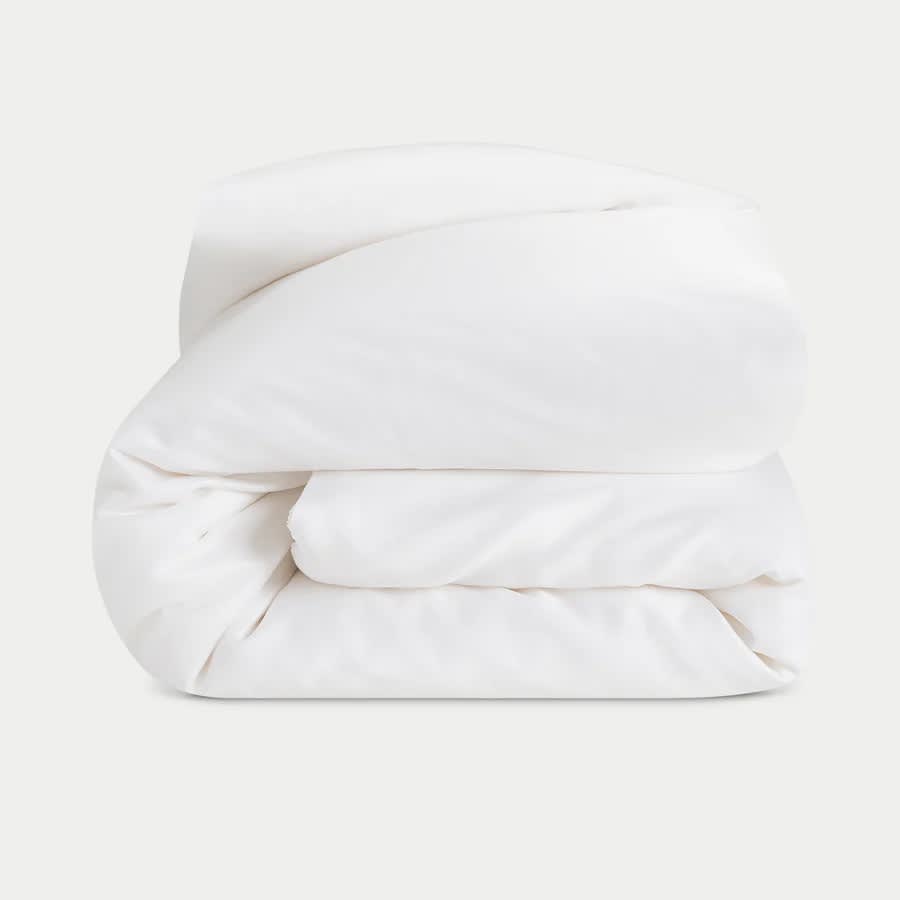
Our testers loved the light and silky feel of the Cozy Earth Bamboo Comforter.
Pros & Cons
Pros
- Extraordinarily soft and breathable
- Bamboo-derived viscose delivers superb temperature regulation
- Generous 100-night sleep trial and 10-year limited warranty
Cons
- Thinner profile than traditional down comforters
- Machine-washing is not recommended
Full Details
How Does It Feel?
Why We Like It
Best Temperature Regulating
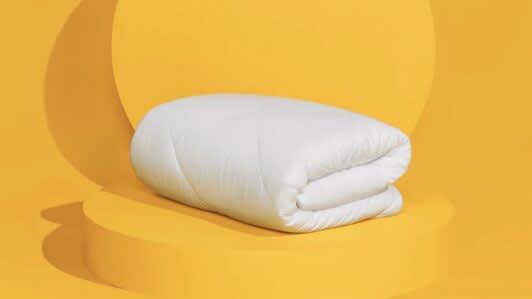
Slumber Cloud’s thickest, heaviest comforter is also the brand’s best option for beating the heat.
Pros & Cons
Pros
- Clima Dry down alternative fibers crate bursts of cooling in response to body heat
- Stretch-nylon shell is durable and resistant to shape loss
- Diamond baffle boxes evenly distribute the fill and minimize clumping
Cons
- Not ideal for people seeking a thin, lightweight comforter
- More expensive than the average comforter
Full Details
How Does It Feel?
Why We Like It
Best All-Season
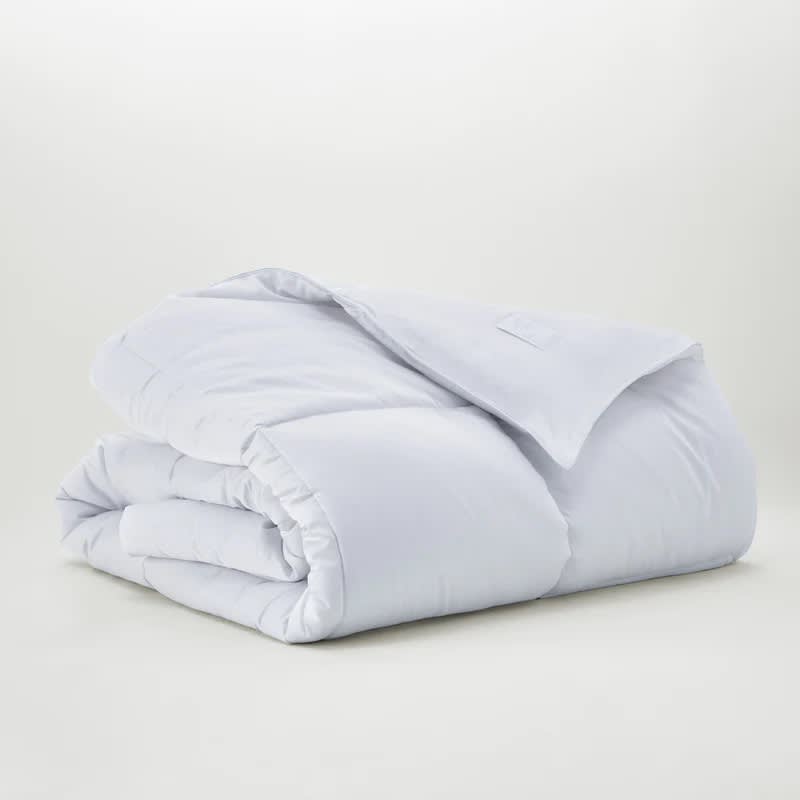
Filled with a proprietary fiber that’s engineered to regulate temperature, the Sijo TempTune Comforter is designed to help sleepers maintain an ideal body temperature regardless of climate.
Pros & Cons
Pros
- Fill contains fibers designed to maintain optimal body temperature year-round
- Tencel and nylon cover wicks moisture
- Designed with loops for attaching a duvet cover
Cons
- Not machine-washable
- Down alternative fill is less durable than down
Full Details
How Does It Feel?
Why We Like It
How We Test
In order to make our best cooling comforter list, a model has to wow us during our sleep lab testing. We try every comforter personally, examining how shell fabrics and fills feel against the body. Looking closely at comforter construction also allows us to better understand quality and durability.
To decide whether a comforter is actually cooling or not, we measure its temperature regulation. Testers who run hot, cold, and in-between try every model and then assign it a score based on whether or not they felt cool or temperature neutral while using a particular comforter.
We also factor existing customer reviews into our choices because certain cooling technologies can become less effective over time. Verified reviews help us understand whether a comforter will continue to feel cool over time.
What Is a Cooling Comforter?
Cooling comforters help sleepers maintain an optimal sleeping temperature through materials that emphasize breathability, moisture-wicking capabilities, and temperature regulation.
Breathability refers to how much airflow the comforter allows. More airflow means faster heat dispersion and cooler sleep. Moisture-wicking fabrics pull sweat away from the body so the comforter doesn’t become damp.
Temperature regulation describes the comforter’s ability to adapt to body temperature. Some cooling comforters absorb and release excess heat when the sleeper gets too warm, but still insulate at cold temperatures.
Thanks to these characteristics, cooling comforters can greatly improve quality and consistency of sleep for hot sleepers, people who live in warm climates, and those who sleep with a partner or pet.
As a hot sleeper, I look for a comforter that has both a breathable fill and shell material. It doesn’t do much good if you’ve got an airy fill and a shell that traps heat.
Why Should You Use a Cooling Comforter?
Cooling comforters help prevent sleep interruptions and restlessness caused by changes to body temperature. Like traditional comforters, they also add a cozy drape over the sleeper for extra comfort, and they can serve as a cover to prevent spills and stains on the mattress.
Hot sleepers and those in warm climates especially benefit from their temperature regulation. However, because many cooling comforters adapt to different body temperatures, they are also useful for couples and people who sleep with pets.
Comforters vs. Duvets
While comforters and duvets perform the same function, they differ slightly in their construction and care. Comforters consist of a fabric shell with fill, and are able to be used as-is. Duvets include a fluffy insert with a thinner removable cover meant to be washed regularly. Some comforters are designed with loops for attaching duvet covers.
|
Comforter
|
Duvet
|
|
|
Ideal For |
|
|
Best Types of Cooling Comforters
Quality cooling comforters are constructed from breathable materials to help the body disperse heat. We’ll detail different breathable fabrics and explain how they perform in cooling comforters.
Down and Down Alternative
Down fill is derived from the fluffy clusters found underneath the outer feathers of ducks and geese. Down is light yet compressible, and it’s often associated with luxury and higher price-points. However, it also has a tendency to trap heat, which makes it excellent for cold climates but less common in cooling comforters.
Down alternatives use synthetic or semisynthetic materials to mimic the light fluffiness of down. Quality down alternatives feel as soft as the real thing, but they may be constructed from a more breathable material or have added cooling agents. Down alternatives are generally less durable than real down but come at a lower price-point.
Cotton
Breathable and crisp yet still soft to the touch, cotton has long been a standard for warm weather bedding. Cooling comforters that use it are generally more affordable than those that use other natural materials. However, comforters made from cotton may not insulate as well in cold weather.
Silk
Silk has a smooth, airy feel associated with luxury, and it’s an excellent temperature regulator. The supremely breathable material resists heat buildup but still provides insulation when the temperature drops. Silk comforters are more difficult to care for and usually sell at a premium price-point.
Eucalyptus
Many comforters use lyocell fibers derived from eucalyptus plants because they create a soft, breathable fabric that wicks moisture and rivals the smoothness of silk. Eucalyptus-based fabrics are considered more sustainable since the plant requires less water than cotton to grow.
Wool
Known for its breathability, moisture-wicking properties, and temperature regulation, wool is a popular material for comforters because it also keeps sleepers warm in cold weather. However, wool is heavier than other breathable fabrics, and cooling comforters often use lighter fabrics that perform better in the summer.
There are lots of companies using cooling technology in their comforters. These features definitely have their place, but I think they’re best when used to complement already cool, natural materials like cotton, wool, and down.
Picking the Best Cooling Comforter for You
Though all cooling comforters share the same basic function, specific attributes of individual models can vary widely. While the climate where you live and your sleeping needs and preferences will determine which comforter is best for you, we suggest taking the following considerations into account when shopping for a cooling comforter.
| Size | Size options vary according to the manufacturer, but most comforters are designed based on standard mattress sizes. Some comforters are slightly oversized for extra drape or use on higher-profile mattresses. Some manufacturers offer the same size comforter for full and queen mattresses. |
| Weight | Cooling comforters tend to be lightweight, as heavier comforters have a tendency to trap heat. |
| Temperature Regulation | Some cooling comforters specifically benefit hot sleepers, while others have more advanced temperature regulation that makes them suitable for different types of sleepers and year-round use. |
| Durability | Durability depends on the quality of materials and construction. In general, natural fills like down or cotton are more durable than synthetic alternatives. |
| Cost | The cost of a cooling comforter varies widely depending on the brand, materials, and construction. While prices span from less than $100 to more than $500, you should be able to find a quality cooling comforter in the range of $200 to $300. |
Can Cooling Comforters Help With Night Sweats?
Cooling comforters may help relieve night sweats by regulating body temperature and preventing overheating. However, night sweats have many causes, some of which may not be alleviated by a cooling comforter. People with severe or persistent night sweats should consult their doctor.
What Else Can You Do to Keep Cool at Night?
While a cooling comforter can be an effective way to reduce hot sleeping, there are a number of other steps you can take to stay cool at night.
- Try a Mattress With Better Temperature Regulation: If you’ve tried other bed-cooling strategies without success, it may be time to consider a cooling mattress. In general, hybrid and latex mattresses are naturally more breathable and resistant to heat buildup than all-foam mattresses. That said, some foam mattresses contain cooling agents to counterbalance the material’s tendency to trap heat.
-
Use Pillows and Bedding Made of Breathable Fabrics: If you’re a hot sleeper, you may benefit from using cooling sheets and cooling pillows constructed from breathable materials. Fabrics made from materials like cotton and bamboo-derived viscose allow for extra airflow that may help dissipate body heat.
- Keep Your Room Cool: Taking a few steps to cool your room can make a big impact on your sleeping temperature. Air conditioning, fans, or an open window can help regulate room temperature overnight. Keeping blinds closed during the day prevents heat from building up in the room.
